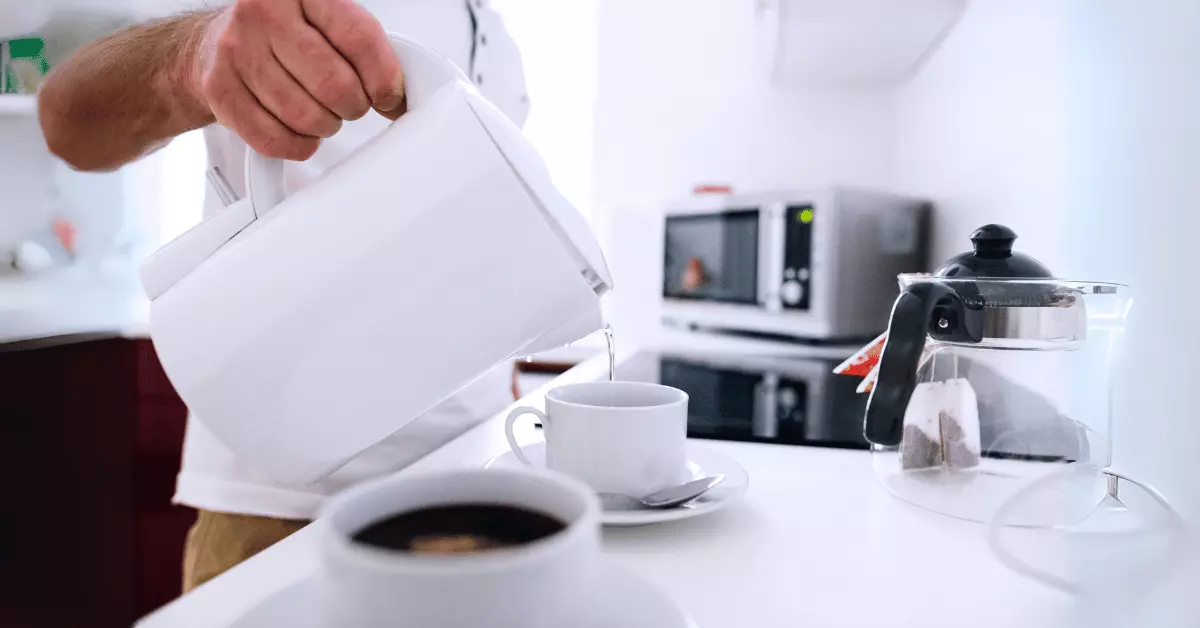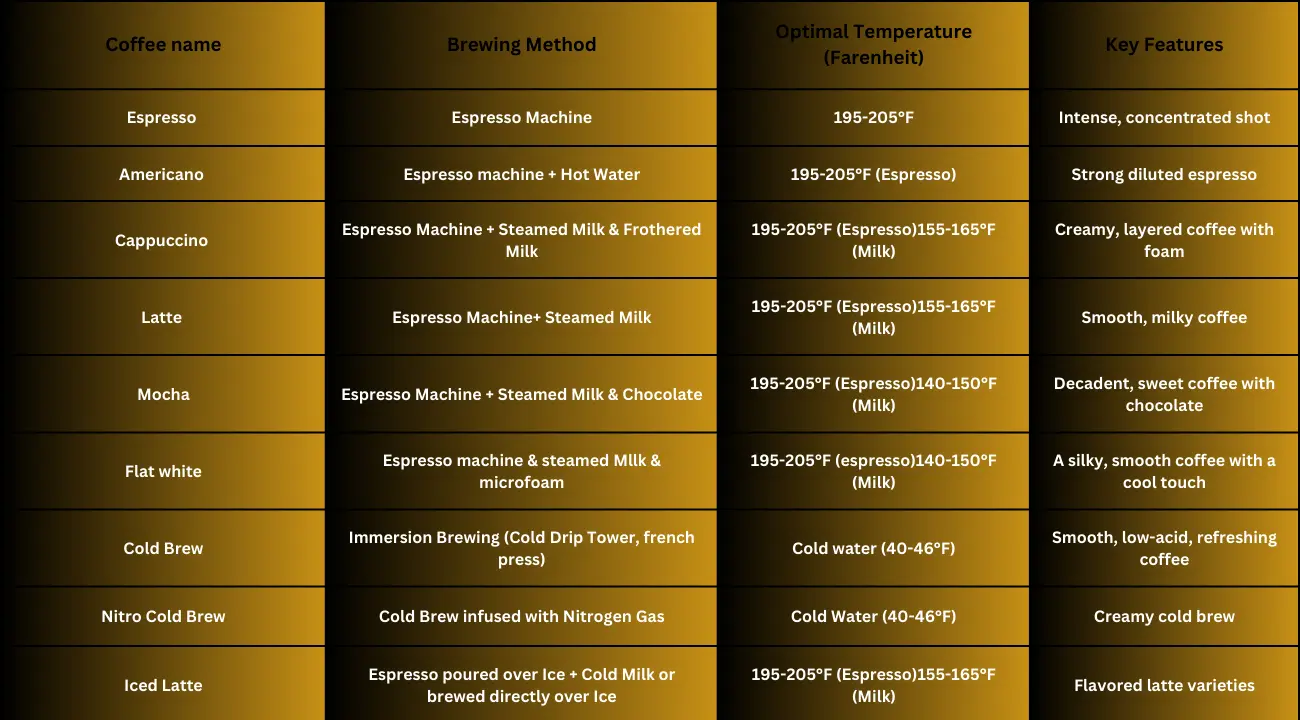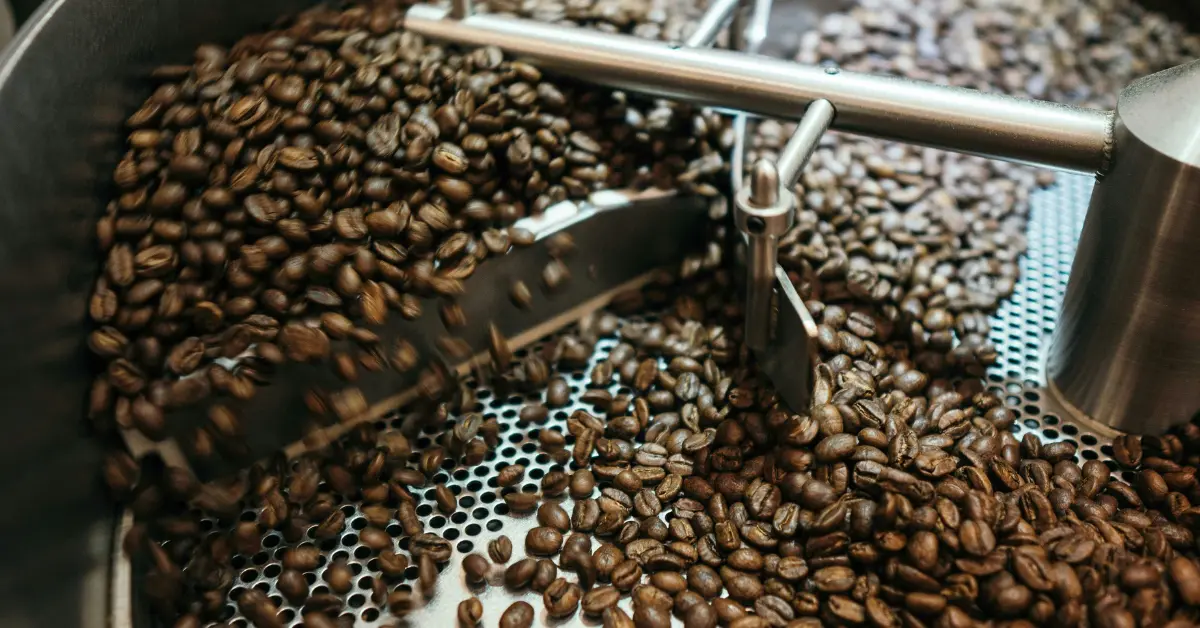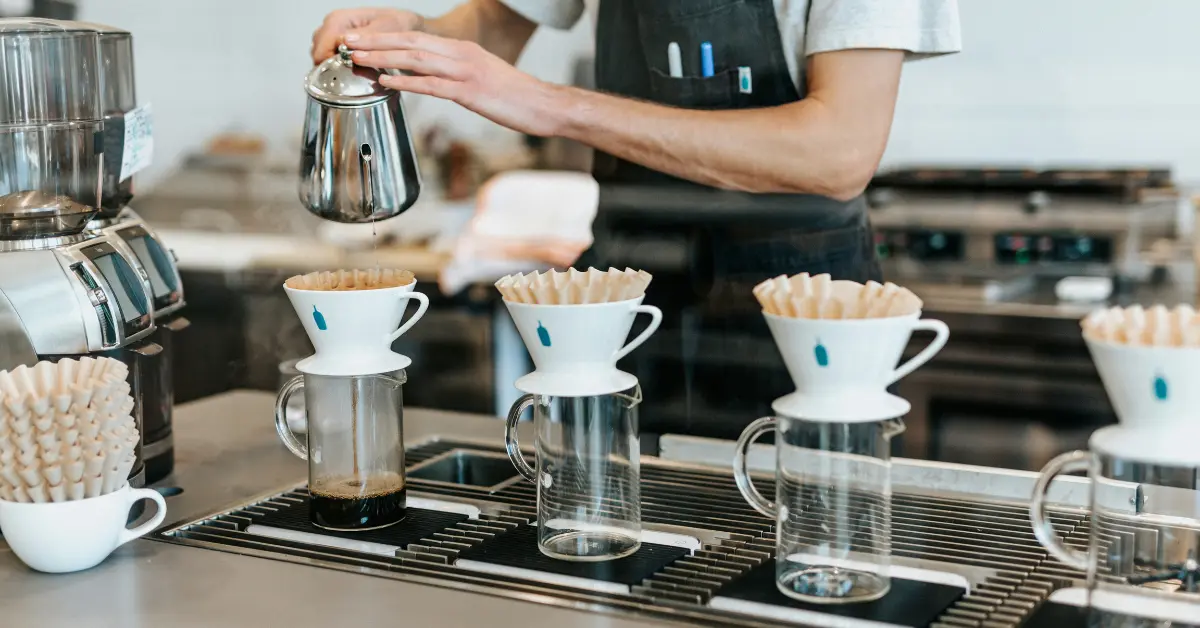
There is no single optimal temperature for a type of coffee. Temperature generally depends on various aspects such as the type of coffee, the method it is using and the add-ons that are being added. So there cannot be a single coffee brewing temperature chart that has everything.
However, we have provided a chart that more or less describes the temperature for the specific method. You can also expect what type of feature you will get with that method and temperature.

Now if you are interested in learning more about the temperature and its effects on most common coffee types then keep scrolling.
Let’s see why different roast methods need different temperatures.
Temperature Influence: Why roasts and methods need different Temperatures to Brew

Light roast: Too much hot water burns away the delicate floral notes and bright acidity of the light roasted beans. Keep the warmth around (195-200°F) to get the perfect sweetness with no bitterness.
Every bean has a preferable temperature, that keeps it in its best shape. Too much heat can ruin their true flavour, and too little temperature will not let them unleash their flavour. So, an optimal temperature needs to be set for the perfect brew.
Dark Roast: These are like the rockstar of beans. They crave hotter temperatures like (205-210°F) to unleash their bold smokey flavour. These beans hide their intensity, flavour, and strength until being hit with hot water. These beans need it to unleash their full potential.
Balance for the brewer: Finding the Temperature Nirvana

Drip Coffee: Try to keep the temperature in the middle, keep it around (195-205°F) for a harmonious melody of flavour. If you heat it too much, you will get a harsh bitterness. The middle ground is the sweet spot for a consistent balanced sweet spot.
French Press: Slow & Steady wins the race! Lower temperatures and longer brewing times get the best result in this method. If you put too much heat in this method, it will get harsh and scratchy, ruining the smooth flavour.
Unlocking the Flavour Secrets: What is the Best Temperature to Brew Coffee?
Espresso: Making a great espresso is like playing music with precise instruments! Imagine the temperature as the conductor directing a symphony to create a nice shot with a creamy top.
If it’s too hot, it becomes bitter; if it’s too cold, it tastes weak and sour. Aim for the perfect balance between 195-205°F for a delicious performance.
Cold Brew: Patience, not heat, is the secret to a tasty cold brew! Cold water (35-45°F) gently brings out smooth flavors and reduces the acidity, giving you a cool and refreshing cup. Using hot water is like having a loud rock band, ruining the delicate smoothness of a cold brew.
There are other influences of the temperature in various aspects. Let’s have a look at other aspects.
7 Key Things that You Should Know about Temperature & Coffee

1. Coffee Bean Varieties:
Arabica beans, known for their delicate sweetness, prefer slightly lower brewing temperatures (195°F) compared to the bolder robusta (200°F). Robusta beans can become harsh at higher temperatures. Blends often adjust accordingly, aiming for a balanced extraction across types.
2. Altitude’s Impact:
High-altitude coffees (grown above 1,500m) are denser and less acidic,. They need slightly warmer water (205°F) to fully unlock their flavors. On the contrary, lower altitude coffees might taste bitter at this temperature, benefiting from a cooler brew (195°F).
3. Seasonal Considerations:
Summer’s warm temperatures can lead to faster extraction, requiring slightly cooler water to avoid bitterness. In winter you might need to heat up one or two degrees more to achieve balance. Adapting based on season can elevate your home brewing game.
4. Aroma and Fragrance Development
Fragrant floral and fruity notes in lighter roasts are best achieved with lower temperatures (195°F). Higher temperatures (200°F+) favor nutty and caramel notes in darker roasts but they can mute delicate aromas.
5. Caffeine Content
Higher brewing temperatures (200°F+) extract more caffeine than lower ones (195°F). For a gentler aroma, consider a cooler brew, while those seeking a full caffeine kick can go for a hotter approach.
Remember, moderation is the key!
6. Cupping Techniques
Coffee professionals use cupping, a ritual of brewing and tasting methods, to assess flavors at irregular temperatures. Starting cool (195°F) and gradually increasing (up to 205°F) reveals a coffee’s full aromatic and taste spectrum.
7. Health Considerations
Cooler brewing (195°F) can reduce acidity, making coffee gentler on sensitive stomachs. Avoid over-extraction (using boiling water) to minimize bitter compounds that can trigger digestion issues.
Conclusion
The reason you are here is because you searched for the “coffee brewing temperature chart”. Now you know not just the temperature chart, you also which is the best temperature to brew coffee. However, it is not easy to reach this point. If you are one of the people to reach this point then you are definitely one of the coffee connoisseurs.
Drink coffee, experiment with it, and find your perfect cup. If you want to know more about coffee brewing and other tips & tricks then follow “coffee blog mart”.

I am Mojoon, a certified and award-winning barista by choice, with 7 years of experience in the field. I have served and trained coffee shop baristas worldwide. I worked at Krispy Kreme for an extended period, and now I aim to help regular people brew coffee like me. I pursue this job with my passion for writing and also provide one-on-one coaching for newly minted baristas.